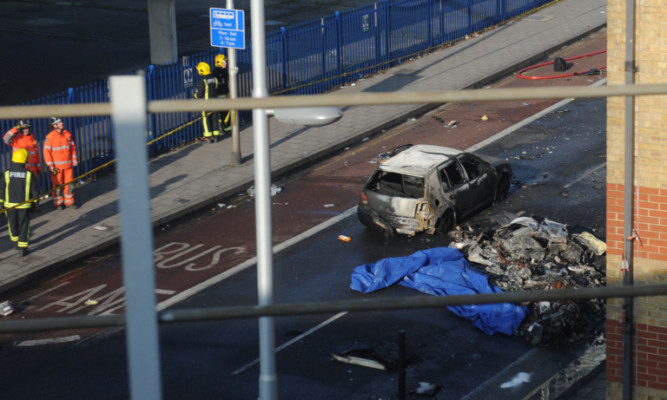A pilot who was killed after his helicopter crashed into a crane in central London had been advised not to embark on the journey because of poor visibility.
Pete Barnes (50) died from multiple injuries when the aircraft clipped the high-rise crane on The Tower at St George Wharf, Vauxhall, south London, last week as he was on his way to pick up a client for a commercial flight.
Pedestrian Matthew Wood (39) was also killed as he walked to work.
A report by the Air Accidents Investigation Branch (AAIB) revealed the client had suggested to the pilot that he should postpone the journey because of poor visibility.
The report said: “At 0718hrs, the client called the pilot to discuss the weather. The pilot said he thought the weather might clear earlier than forecast. The client said he would drive to Elstree and call the pilot to keep him advised.
“At 0731hrs, having noticed how poor the weather was during his journey, the client called the pilot to suggest that he did not take off until he (the client) had reached Elstree and observed the weather. The pilot replied that he was already starting the engines.
“The client stated that he repeated his suggestion that the pilot should not take off.”
Details of text messages sent and received by the pilot were also revealed. At 6.30am he told the client: “Weather OK up north but freezing fog at Elstree and Luton not clearing between 8-10am I’ve got same at Redhill keep you posted.”
He sent the client another message at 7.29am which stated: “I’m coming anyway will land in a field if I have to.”
Another pilot, who was aware of the journey planned by Mr Barnes, sent him a message which read: “Give me a call as I have checked weather and freezing fog around at the moment.”
The report included details of a radio conversation between the pilot and air traffic control which ended seven seconds before the crash.
Mr Barnes requested to land at London Heliport in Battersea.
He asked: “Is Battersea open, do you know?”
After being told the heliport was open, he replied: “If I could head to Battersea that would be very useful.”
Just 15 seconds before hitting the crane, air traffic control told the pilot: “Battersea diversion approved, you’re cleared to Battersea.”
His final words were: “Thanks a lot.”
The report stated: “This exchange ended at 0759.18 when G-CRST (the helicopter) was approximately 150 metres south-west of Vauxhall Bridge.
“Immediately afterwards the helicopter began to turn right. At 0759.25 it struck a crane on the south side of the river 275 metres from the south-west end of Vauxhall Bridge.”
The aircraft had taken off from Redhill, Surrey, and was travelling to collect the client from Elstree, Hertfordshire, on January 16 to take him and another passenger to the North of England.
Mr Barnes, a father of two from Berkshire, had 25 years’ flying experience. He had flown as an air ambulance pilot and in several films during his career including Oscar-winning Saving Private Ryan and Tomb Raider II.
Pedestrian Mr Wood, from Sutton, Surrey, died from severe burns and a leg injury.
